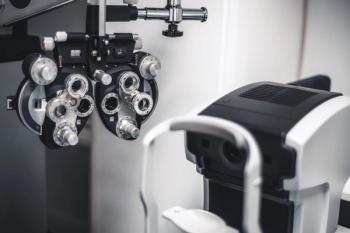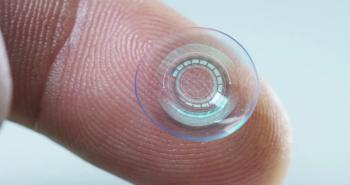
Diplopia in concussion – what is normal? What is abnormal, and when should it go away?
New developments to progress diagnostic criteria for Mild Traumatic Brain Injury (TBI) are discussed by The Mild Traumatic Brain Injury (TBI) Task Force of the American Congress of Rehabilitation Medicine Brain Injury Special Interest Group.
In May of 2023, the Mild Traumatic Brain Injury (TBI) Task Force of the American Congress of Rehabilitation Medicine Brain Injury Special Interest Group convened to develop an evidence review of and expert consensus process for new diagnostic criteria for mild TBI, which was published last month. A mild TBI can occur when an external force causes a rapid acceleration or deceleration of the brain within the skull. This linear, translational, or rotational force placed on the brain then leads to a complex pathophysiological process that results in a physiological disturbance in brain function. The patient must have a one or more clinical signs and at least two acute symptoms and at least one clinical or laboratory finding attributable to the brain injury.1
A common symptom in mild TBI is double vision, which is most commonly due to convergence insufficiency (CI) or pseudo-convergence insufficiency due to an underlying accommodative insufficiency.2 Thus, a patient with diplopia post-concussion should complain of intermittent horizontal diplopia with or without blurry vision at near, that is worse with prolonged near tasks like computer or reading and is alleviated by taking breaks and looking far away. Diplopia that is vertical, constant, at distance, or gaze related is atypical (but not impossible) for a mild TBI and should have a comprehensive neurologic/ophthalmologic/neuro-optometric workup.
Unlike the typical developmental CI as defined by the CITT trial,3 post-traumatic convergence deficits may not have all of the developmental CI criterion including exophoria larger at near than at distance or reduced fusional convergence.4 For example, some patients may have an esophoria with a reduced near point of convergence (NPC), a finding atypical in the developmental population. Additionally, testing may provoke immediate and intense symptoms like headache, dizziness, nausea, and brain fog.5 If a patient is voicing post-concussion diplopia complaints—providers should perform cover test at distance and near, NPC, and monocular near point of accommodation (NPA) testing at minimum. Since patients often fatigue over time, it is important to repeat the NPC and NPA testing 3-5 times as many patients go undiagnosed because their initial performance is within norms.Providers should also note symptom provocation with testing and if not performing a comprehensive oculomotor evaluation, perform a screening vestibular-oculomotor assessment like the VOMS and triage to a tertiary care neuro-optometrist as indicated.
Interestingly, oculomotor/diplopia deficits may not manifest at the time of injury, but rather may develop over the next few hours or days.6 The majority of patients post-concussion ~75%, will have vestibular-oculomotor complaints acutely, and the majority of those patients will self-resolve within 3-4 weeks.7 If seeing the patient acutely (<1 week from injury), a practitioner can start active vision rehab depending on how the patient is feeling, or depending on their practice/the patient, they can wait to refer only those with persistent post-concussion symptoms that are 4 weeks post-injury for active vision therapy to alleviate the patient’s oculomotor complaints.8,9
References
Silverberg ND, Iverson GL; ACRM Brain Injury Special Interest Group Mild TBI Task Force members:, et al. The American Congress of Rehabilitation Medicine diagnostic criteria for mild traumatic brain injury. Arch Phys Med Rehabil. 2023;104(8):1343-1355. doi:10.1016/j.apmr.2023.03.036
Merezhinskaya N, Mallia RK, Park D, Bryden DW, Mathur K, Barker FM 2nd. Visual deficits and dysfunctions associated with traumatic brain injury: a systematic review and meta-analysis. Optom Vis Sci. 2019 Aug;96(8):542-555. doi:10.1097/OPX.0000000000001407.
Convergence Insufficiency Treatment Trial (CITT) Study Group. The convergence insufficiency treatment trial: design, methods, and baseline data. Ophthalmic Epidemiol. 2008 Jan-Feb;15(1):24-36. doi:10.1080/09286580701772037.
Raghuram A, Cotter SA, Gowrisankaran S, Kanji J, Howell DR, Meehan WP 3rd, Shah AS. Postconcussion: Receded Near Point of Convergence is not Diagnostic of Convergence Insufficiency. Am J Ophthalmol. 2019 Oct;206:235-244. doi:10.1016/j.ajo.2019.04.008.
Mucha A, Collins MW, Elbin RJ, Furman JM, Troutman-Enseki C, DeWolf RM, Marchetti G, Kontos AP. A Brief Vestibular/Ocular Motor Screening (VOMS) assessment to evaluate concussions: preliminary findings. Am J Sports Med. 2014 Oct;42(10):2479-86. doi:10.1177/0363546514543775.
Corwin DJ, Arbogast KB, Haber RA, et al. Characteristics and Outcomes for Delayed Diagnosis of Concussion in Pediatric Patients Presenting to the Emergency Department. J Emerg Med. 2020 Dec;59(6):795-804. doi:10.1016/j.jemermed.2020.09.017.
Ellis MJ, Cordingley D, Vis S, Reimer K, Leiter J, Russell K. Vestibulo-ocular dysfunction in pediatric sports-related concussion. J Neurosurg Pediatr. 2015 Sep;16(3):248-55. doi:10.3171/2015.1.PEDS14524.
Gallaway M, Scheiman M, Mitchell GL. Vision Therapy for Post-Concussion Vision Disorders. Optom Vis Sci. 2017 Jan;94(1):68-73. doi:10.1097/OPX.0000000000000935. PMID: 27505624.
Collins MW, Kontos AP, Okonkwo DO, et al. Statements of Agreement From the Targeted Evaluation and Active Management (TEAM) approaches to treating concussion meeting held in Pittsburgh, October 15-16, 2015. Neurosurgery. 2016 Dec;79(6):912-929. doi:10.1227/NEU.0000000000001447.
Newsletter
Want more insights like this? Subscribe to Optometry Times and get clinical pearls and practice tips delivered straight to your inbox.















































